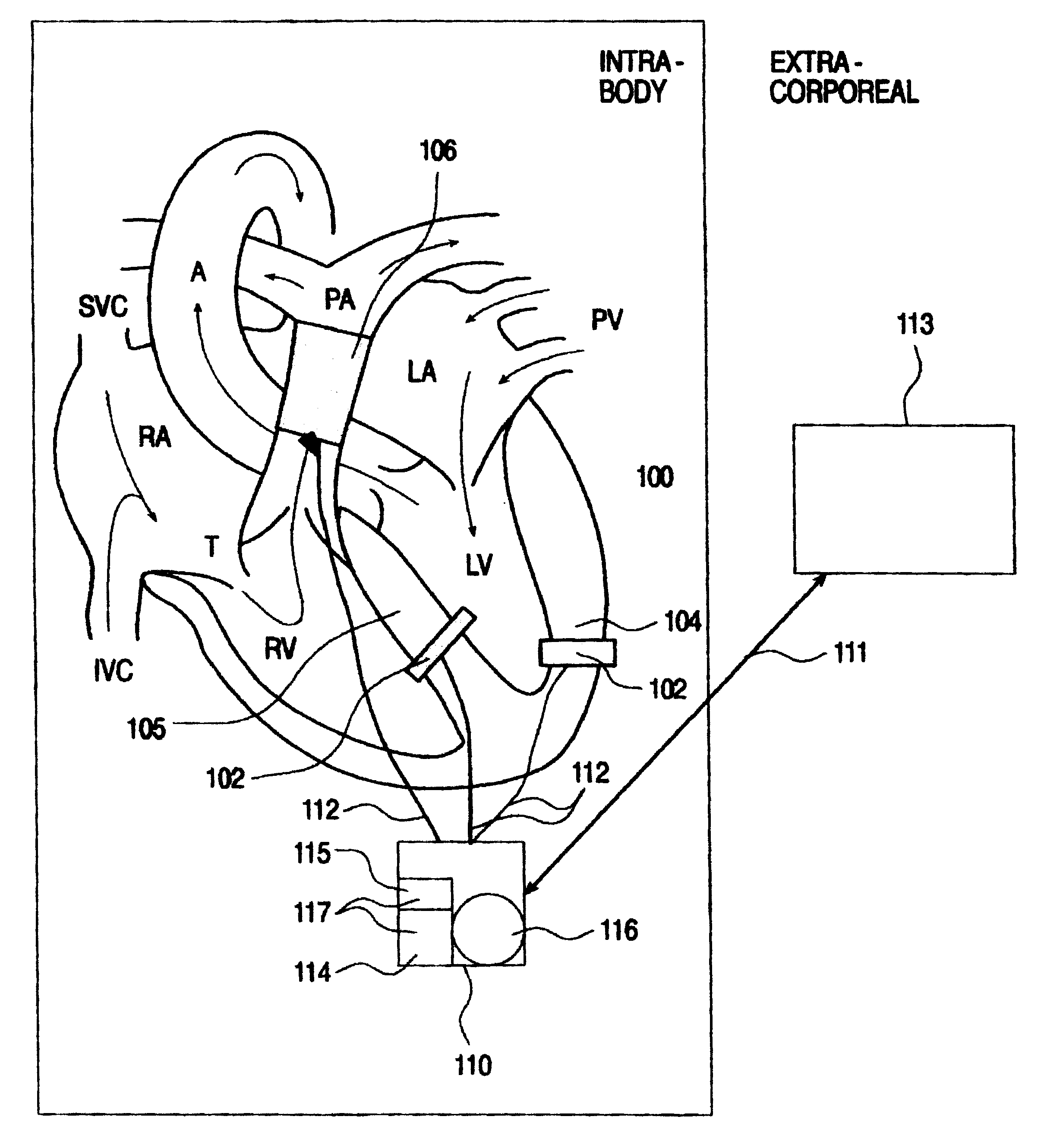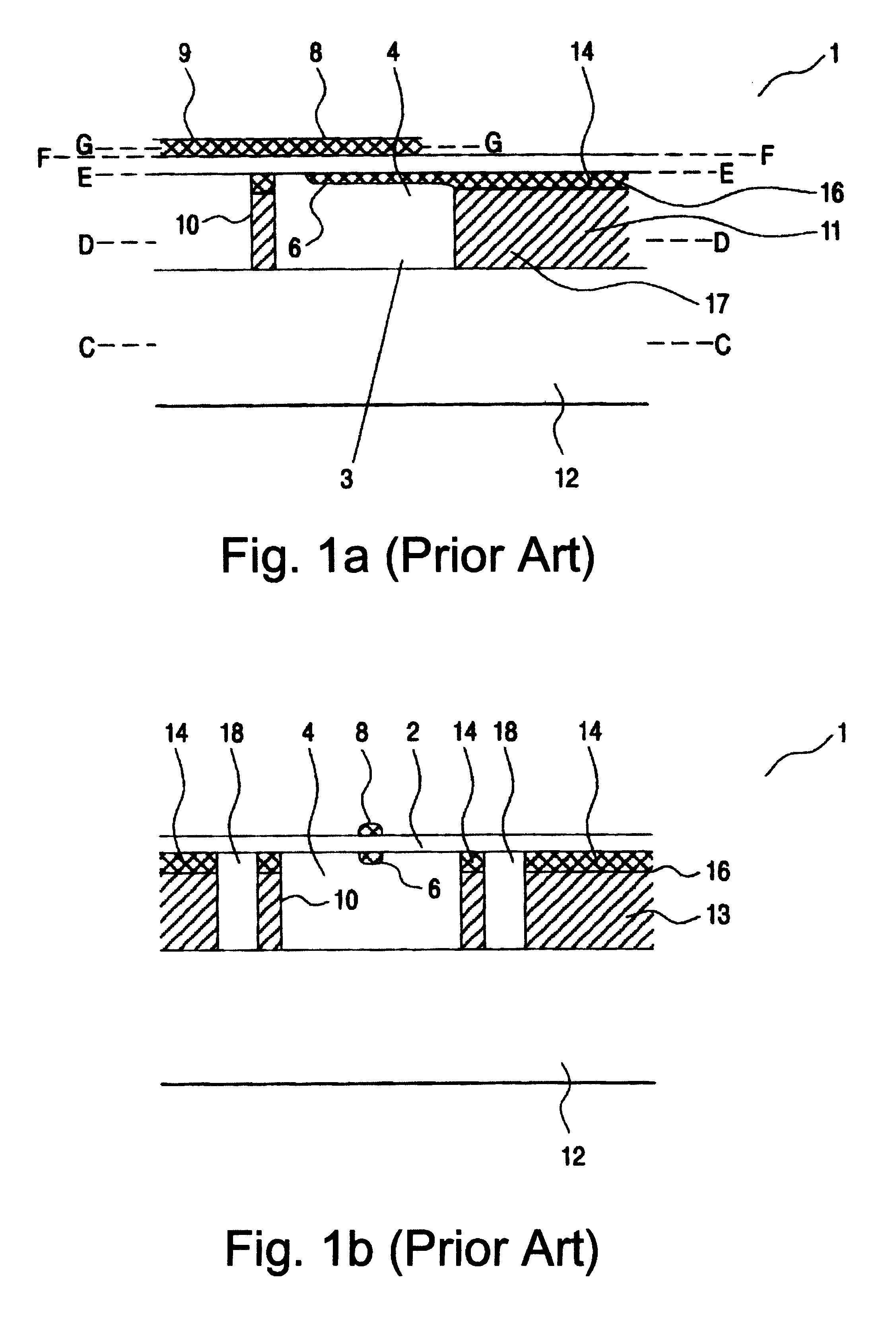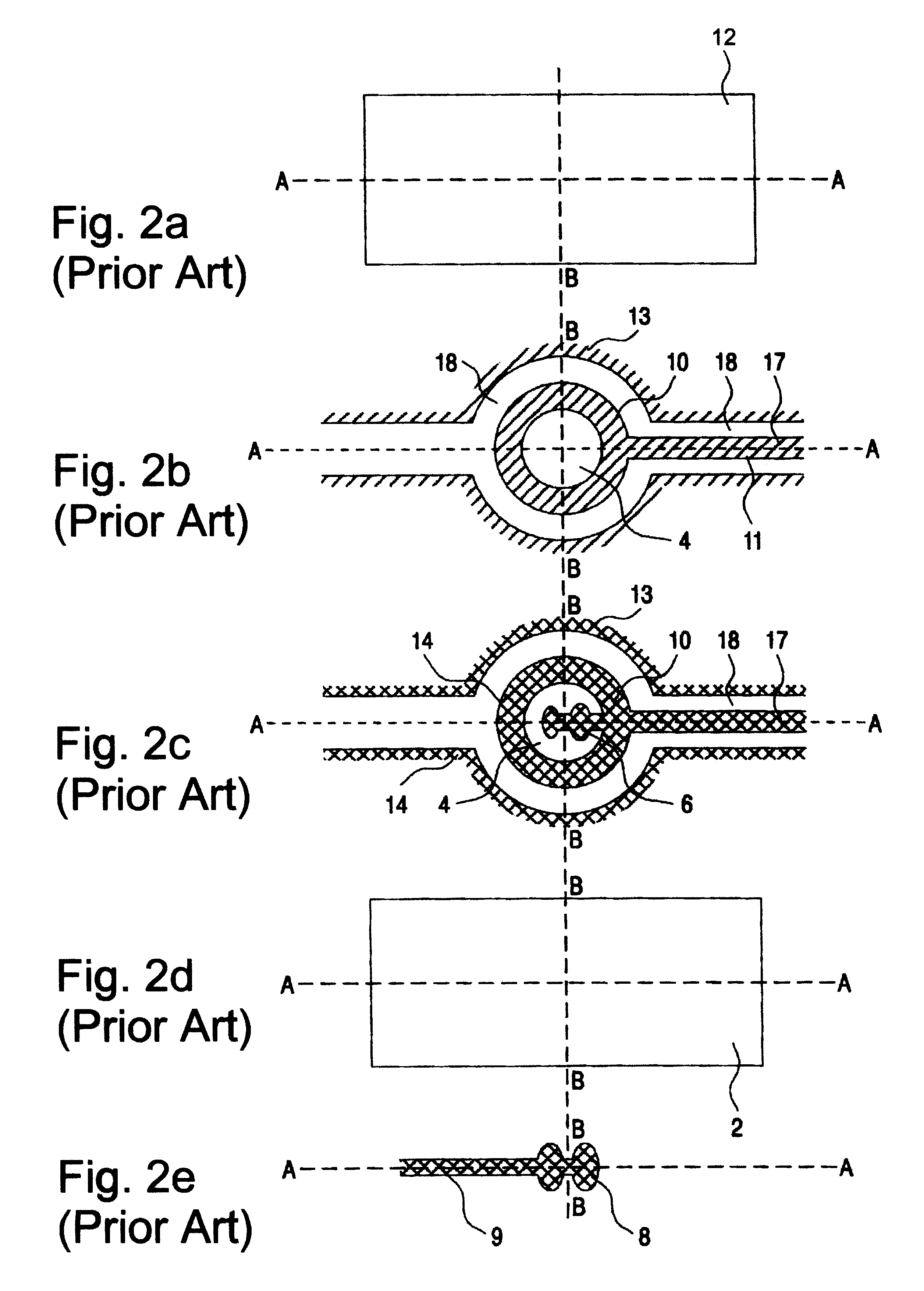System and method for monitoring a parameter associated with the performance of a heart
a technology of a which is applied in the field of system and a monitoring method for the performance of a heart, can solve the problems of complex congestive heart failure, physiological disturbances, and impairment of the performance of the heart as a pump
- Summary
- Abstract
- Description
- Claims
- Application Information
AI Technical Summary
Problems solved by technology
Method used
Image
Examples
example 1
Pulsatile Flow of Liquids in Arteries--Theoretical Considerations
Blood flow in the arteries is pulsatile. Blood is ejected from the left ventricle of the heart into the aorta, and the entire vascular system, in sharp pulses. The pulsatile nature of the flow manifests as sharp, periodic fluctuations in the instantaneous blood pressure, as well as in the flow velocity along the arteries.
The purpose of the following series of experiments is to demonstrate how one can determine the rate of flow in a blood vessel such as an artery from instantaneous pressure measurements at various points along the length of the artery.
In these experiments a coronary artery was modeled by a flexible latex tube, and the properties of a pulsatile flow of water through the tube were studied using pressure sensors mounted within the tube.
The theory of pulsatile flow of a liquid or a gas through a pipe is essentially one of acoustics, with certain modifications.
example 2
Acoustic Transducer
FIGS. 1a, 1b and 2a-2e illustrate a preferred embodiment of a transducer element utilizable by one embodiment of the system of the present invention. As shown in the figures, the transducer element 1 includes at least one cell member 3 including a cavity 4 etched into a substrate and covered by a substantially flexible piezoelectric layer 2. Attached to piezoelectric layer 2 are an upper electrode 8 and a lower electrode 6, the electrodes for connection to an electronic circuit. The substrate is preferably made of an electrical conducting layer 11 disposed on an electrically insulating layer 12, such that cavity 4 is etched substantially through the thickness of electrically conducting layer 11.
Electrically conducting layer 11 is preferably made of copper and insulating layer 12 is preferably made of a polymer such as polyimide. Conventional copper-plated polymer laminate such as KAPTON.TM. sheets may be used for the production of transducer element 1. Commerciall...
PUM
 Login to View More
Login to View More Abstract
Description
Claims
Application Information
 Login to View More
Login to View More - R&D
- Intellectual Property
- Life Sciences
- Materials
- Tech Scout
- Unparalleled Data Quality
- Higher Quality Content
- 60% Fewer Hallucinations
Browse by: Latest US Patents, China's latest patents, Technical Efficacy Thesaurus, Application Domain, Technology Topic, Popular Technical Reports.
© 2025 PatSnap. All rights reserved.Legal|Privacy policy|Modern Slavery Act Transparency Statement|Sitemap|About US| Contact US: help@patsnap.com



